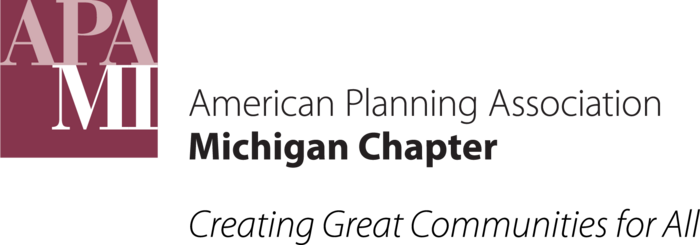Complete Story
05/09/2025
Coastal Solutions Compendium
Coastal Floodplain Overlay
Coastal floodplains are low-lying areas at risk of flooding from storm surge and high-velocity waves. Flood Insurance Rate Maps (FIRMs) developed by the Federal Emergency Management Agency (FEMA) help identify areas at risk of flooding and can be used as a tool for creating regulations that determine where and how development may occur in those areas.
Why it supports resilience:
Floodplain regulation is intended to reduce future damage to property and protect human safety, which reduces a community’s vulnerability to coastal hazards.
How it is used:
Counties that border the Great Lakes have FIRMs created by FEMA that identify locations and elevations for Special Flood Hazard Areas (Zones V, VE and A). The Michigan Building Code allows local units of government to adopt regulations that are more stringent than the state minimums, meaning they can require higher freeboard or other measures to enhance flood protection. A floodplain overlay district adds these additional building restrictions on the location and elevation of new or substantially improved construction, while keeping the base zoning in place. Coastal floodplain provisions may be included in a natural features or sensitive area overlay district. They may also be used in conjunction with permit review of state-regulated lands. These designated areas change over time, and the community should plan on updating the regulation as new information becomes available.
Possible obstacles to implementation:
- Not all coastal communities have updated FIRM maps from FEMA.
- Maps may become inaccurate due to rapidly changing climate conditions.
Example:
City of St. Joseph Floodplain Overlay District - Article IX - Special Districts
9.6.1.Intent. Certain portions of the City of St. Joseph are subject to periodic or seasonal inundation which may result in flood damage to property; health and safety hazards of loss of life; disruption of commercial, industrial, and municipal and other economic activities; and adverse effects upon the general welfare of the community. It is the purpose of this section to significantly reduce hazards to Persons and damage to property as a result of flood conditions in St. Joseph, and to comply with the provisions and requirements of (1) the National Flood Insurance Program that are incorporated in 42 U.S.C. 4001-4128, and subsequent enactments and the rules and regulations promulgated in furtherance of this program by the Federal Emergency Management Agency, as published in the Federal Register, vol. 44 CFR, Part 59, October 1, 1995 and subsequent amendments, and (2) the relevant requirements of the Michigan Natural Resources and Environmental Protection Act, PA 451 of 1994, as amended. Further, the objectives of this section include:
- The protection of human life, health and property from the dangerous and damaging effects of flood conditions.
- The minimization of public expenditures for flood control of projects, rescue and relief efforts in the aftermath of flooding, repair of flood-damaged public facilities and utilities, and the redevelopment of flood damaged homes and neighborhoods, commercial and industrial areas.
- The prevention of private and public economic loss and social disruption as a result of flood conditions.
- The maintenance of stable development patterns not subject to the blighting influence of flood damage.
- To insure that the public has access to information indicating the location of land areas subject to periodic flooding.
- To preserve the ability of floodplains to carry and discharge a base flood.
Tasks for implementing this tool:
- Engage the community about the potential change (see Community Engagement Approaches in Chapter VI).
- Conduct an inventory of the coast using FEMA FIRM maps, if available. Map out the Special Flood Hazard Area (SFHA), which will include Coastal High Hazard Area Zones V and VE.
- Identify all coastal parcels that would be subject to the floodplain development restrictions and determine whether to add these regulations as part of an overlay district or as a general zoning provision that applies to all properties with coastal frontage.
- To identify the extent of an overlay district, compare the mapped flood zones with existing zoning districts and parcel boundaries, and identify an overlay district boundary that encompasses the flood hazard zone(s).
- Using data from your inventory, determine what types of regulations will be most protective. These could include:
- Limitation of buildings in a special flood hazard zone.
Require new construction located in a floodplain to have a Base Floor Elevation (BFE) of 2 feet of freeboard [or 1 foot above the 500-year flood elevation] - Identify where in the ordinance to add the floodplain regulations. This may be in a chart, or it may warrant a separate section. The advantage of a separate section is that any special limitations, such as natural features protection, parking limitations, armoring limitation, septic tank placement, etc., may be listed.
- Limitation of buildings in a special flood hazard zone.
- Determine the appropriate review process, either through a site plan or construction permitting.
Alternatives:
- Regulate the location and/or elevation of all property located in Special Flood Hazard Zones without creating an overlay district. These regulations would likely be contained in the “Special Provisions” section of the Zoning Ordinance.
- Identify any current use located in a Special Hazard Flood Zone as a Special Land Use that requires approval for proposed expansion or replacement.

